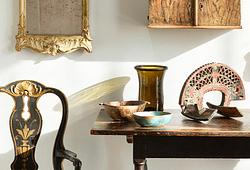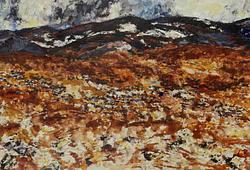Gabriel Orozco
"Black Kites", 1997
Signed Gabriel Orozco and numbered 7/175. C-print, image 28 x 19.5 cm.
Muut tiedot
Another example from the same edition is in the collections at the National Gallery of Victoria, Melbourne. The original, i.e., the sculpture, is located at the Philadelphia Museum of Art. There, the work is described as follows:
During a long convalescence, Gabriel Orozco covered a human skull with a graphite checkerboard that bends and swells over its bony contours. The skull can readily be understood as a memento mori, or reminder of death—a symbol common in the European still-life tradition as well as in the visual traditions of Orozco’s native Mexico. Yet Orozco’s sinewy network of lines brings the skull to life again, suggesting the thoughts that once filled this shell, or the sensate skin that covered it. Working at the interface between two-dimensional drawing and a three-dimensional object, Orozco draws attention to relationships between a surface and an interior world.







































